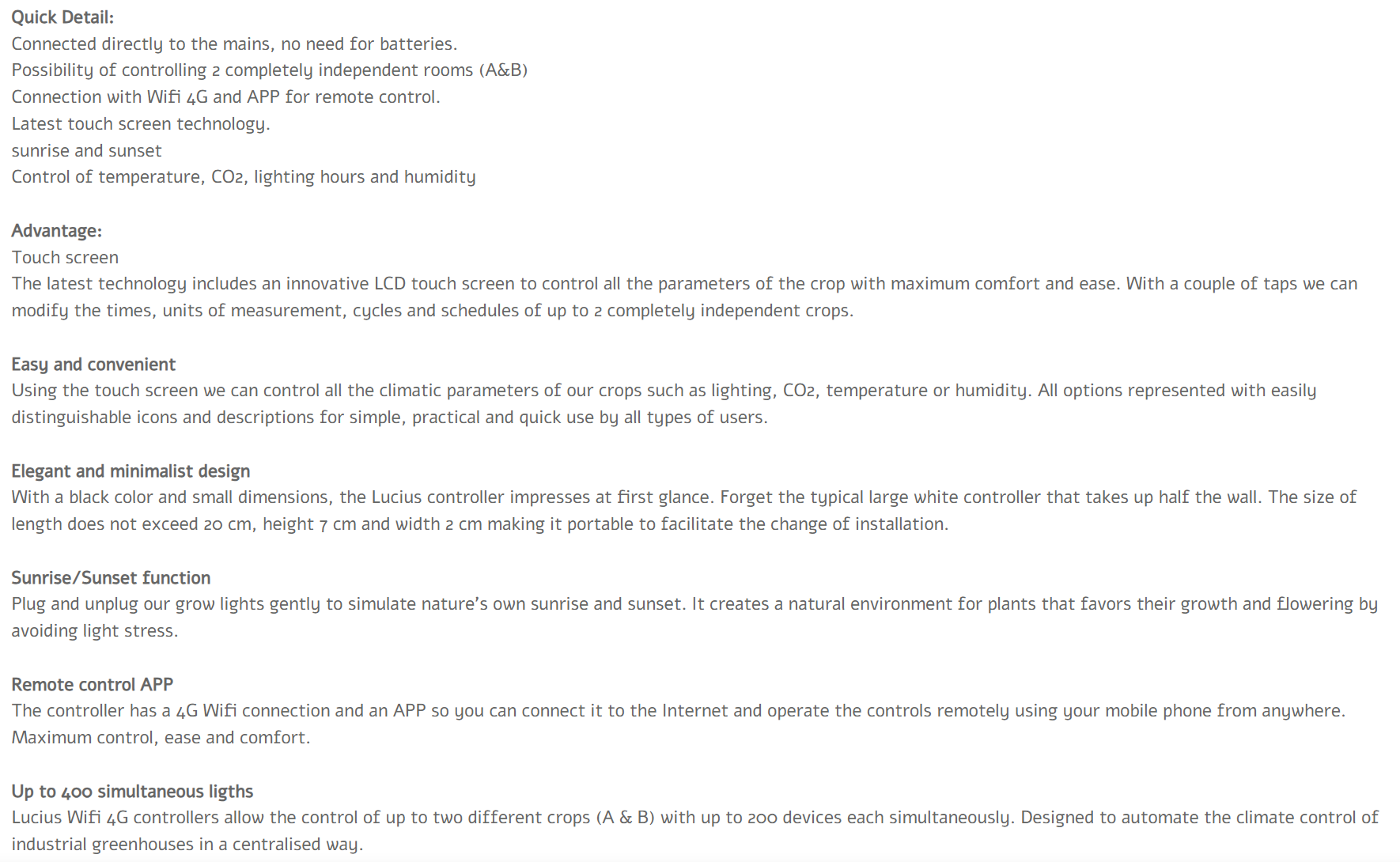未分类
Lucius 4G WIFI Touchscreen Controller with APP Function
MSRP $599
Description:
Controllers for industrial cultivation of up to 2 greenhouses with 200 Lucius units in each. Touch screen with simple controls that allow control of lighting (intensity and hours), CO2 concentration in the air, relative humidity and ambient temperature. Designed to automate the most important climatic parameters in large-scale industrial crops.

The founders and manufacturer of Lucius Digital lighting products have been in the manufacturing space specific to cultivation lighting for 15 years. Proven track record with OEM & ODM manufacturing for various house hold brands in the past servicing tens of thousands of gardens worldwide.Official website address:http://luciuslight.com/